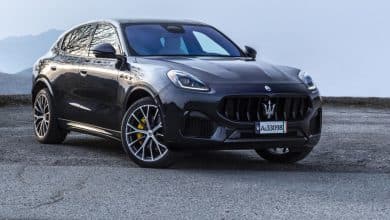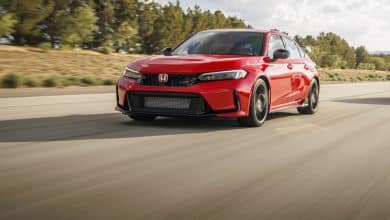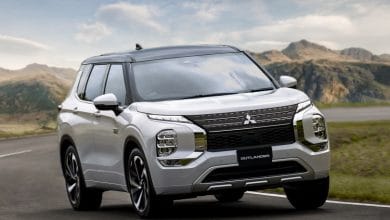BMW wonders. Again. Since the situation varies from country to country, which energy source will take over? In the face of uncertainty, the Munich manufacturer is preparing for the future and is not neglecting any option. The simultaneous release of the i5 (electric) and the new 5 Series (petrol) attests to this. The brand with the blue and white propeller relies on the public. It’s up to him to choose based on available resources.
Yes to the electric transition, but not at any price. BMW recommends another approach. And this one differs from many traditionalist brands. While the latter are straining their finances to create architectures specific to electric vehicles only, BMW is banking instead on the adaptability of its industrial apparatus. This allows it to juxtapose on a common basis, on the same assembly line, almost any propellant (petrol, diesel, wired or wireless hybrid, electric and soon hydrogen). BMW considers its strategy more economically viable and above all more flexible. If demand for one type of engine accelerates, it will be enough to produce less of the others. That is all.
An annoying central tunnel
As pragmatic as it may be, the method advocated by BMW must nevertheless make important concessions. Particularly in terms of habitability, where the i5 does not benefit from all the advantages linked to the presence of one, or even two electric thrusters. In fact, the surface area occupied by an i5 on the street is approximately the same as that of the Kia EV9 (see our January 8 test bench). However, the South Korean utility vehicle has three rows of seats, a perfectly flat floor and a (small) additional trunk at the front. The i5 can only accommodate four people on board. Rear seat passengers have to deal with a central tunnel. This is completely useless on an electric vehicle, but essential for a thermal model. In addition, although the seat backs fold away, the trunk volume of the i5 is 490 L, as long as you find another place to store the charging cables. In the front ? Sorry, there is no safe.
-
PHOTO PROVIDED BY BMW
The surface area that an i5 takes up on the street is roughly the same as that of the Kia EV9. However, the South Korean utility vehicle has three rows of seats, a perfectly flat floor and a (small) additional trunk at the front.
-
PHOTO PROVIDED BY BMW
The interior of the BMW i5
-
PHOTO PROVIDED BY BMW
The i5's controls require a period of acclimatization, not driving it. It's not a pure BMW, but the concentration of electronic aids helps to veil the weight of this car.
-
PHOTO PROVIDED BY BMW
The rear seat of the BMW i5
-
PHOTO PROVIDED BY BMW
The BMW i5 console
-
PHOTO PROVIDED BY BMW
The trunk of the BMW i5
-
PHOTO PROVIDED BY BMW
The finish of the BMW i5
1/7
All these compromises might lead us to conclude that BMW doesn't truly have electric faith. Don't believe any of it. Whatever energy stirs it from its static position, a BMW must first and foremost be a BMW. Nothing else.
Despite a slightly raised seat compared to a Series 5 – the collection of batteries which sit underneath obliges – those accustomed to this sedan will see nothing but fire. Well almost. Their nostrils will no longer be able to smell the smell of leather unless they agree to pay the $2,900 required by BMW. As standard, we are entitled to recycled organic and vegan materials (much less polluting to produce than leather). Others will be surprised, when sliding into the controls, at the very (too) plump rim of the steering wheel. It would have been thinner than the i5 would have appeared less intimidating to them. Others will rail against the number of stamps displayed on the infotainment screen. There are many. And what about its buttons, dials and switches, sometimes flashy, sometimes superficial, with which it is better to familiarize yourself before hitting the road because of the great distraction they cause.
The i5's controls require a period of acclimatization, not driving it. It's not a pure BMW, but the concentration of electronic aids helps to veil the weight of this car. The air suspension contributes a lot to this. Many electric vehicles rock on the undulations and others contract. The i5 cushions them correctly and with a hint of firmness, it is true. It also stands out from the “others” because it is not driven by a pedal. Its regenerative braking, however, allows significant deceleration, but is not very natural. No more than the soundtrack supposed to provoke emotion when the right foot presses the accelerator. Prefer silence. And the wind whistling around the mirror shells.
A real BMW
Although its mass remains an annoyance, the i5 negotiates and takes turns in a good mood. Its steering may not have the desired liveliness, but it has the merit of transmitting the activities of the front axle to our hands. Rather neutral, the i5 demonstrates remarkable stability. The four-wheel steering system (they are also drive) helps to make it more agile, especially in tight spaces.
The i5 M60 gets going quickly (see our tables). Like many electric vehicles, with the difference that many of them have forgotten that power is nothing without control. Nor autonomy. In this regard, the i5 does not break anything. There is no doubt that many buyers preferred to accelerate less hard and drive for longer. According to the consumption ratings from Natural Resources Canada (see our tables for the figures), the i5 M60 turns out to be less efficient, for example, than a Tesla Model S Plaid (regardless of the size of the tires).
As part of this test, carried out in winter conditions of course, but far from extreme (-10 0C on average), the maximum range obtained was 322 km. This may not seem like much, but considering the range advertised by the government agency (386 km), the i5 only lost 19.9%. Our best consumption: 23.5 kWh/100 km. When it comes to charging, the i5 prefers fast terminals. Ideally very fast. But good management can pay off big. It costs $24.77 to fill up (80%) this i5. How much for his gasoline alter ego? Those interested will not fail to make this calculation before making their choice.
BMW i5
Trial version
M60 xDrive
Eligible for government grants
No
Price
$95,000
Consumption
- 2.6 Le/100 km (i5 with 19 or 20″ wheels)
- 2.8 Le/100 km (i5 with 21-inch wheels)
WE love
- Impeccable finish
- Driving approval
- Considerate and effective suspensions
We like less
- Unspectacular autonomy
- Ergonomics of several commands to review
- Habitability/volume ratio
Our Verdict
The i5 is not an electric vehicle. It's a BMW.
Share your experience
The Press will soon publish the test of the following vehicles: Cadillac Lyriq, Chevrolet Blazer EV, Honda Prologue, Hyundai Kona EV and Mazda 3. If you own one of these vehicles or are waiting for delivery, we would like to hear from you.


















